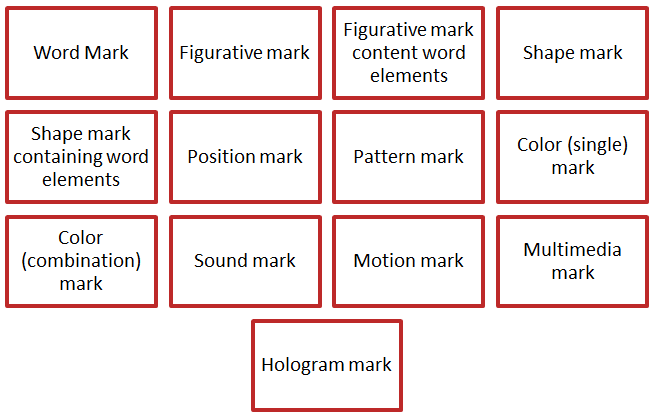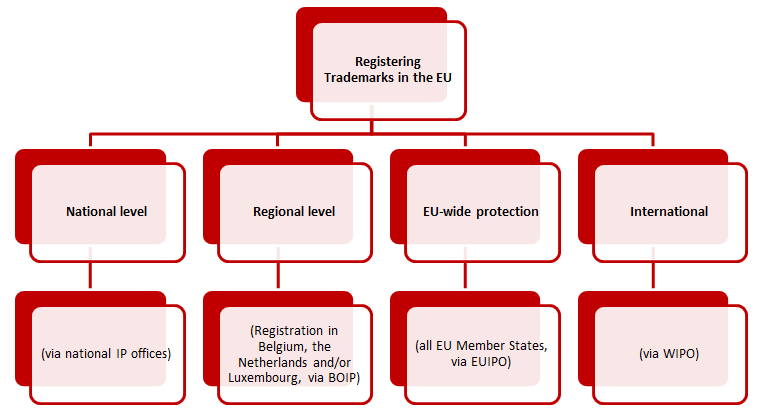Trademark Registration Under EUIPO: All You Need to Know
Businesses operating in the European Union can register a trademark with the EUIPO to enjoy protection from infringement. The EUIPO, short for European Union Intellectual Property Office and formerly known as OHIM, is a European Union agency responsible for design and trademark registration throughout the European Union (EU) with a single application. Thus, it saves time and cost for companies seeking protection for their brands across multiple EU countries. However, it is critical to bear some things in mind while opting for a single trademark registration application.
This article discusses what the EUIPO is, its advantages and disadvantages, and various trademark registration options available for businesses in the EU.
Table of Contents
What is EUIPO?
The European Union Intellectual Property Office manages registered community designs and trademarks in the EU. It also collaborates with IP offices in the EU member states and international partners to provide a seamless IP registration experience across the world.
Design and trademark registration are crucial for trading, manufacturing, and service-offering businesses. The EUIPO can offer exclusive trademark and design protection rights throughout the EU with just one application. Figure 1 below highlights different types of marks one can register at EUIPO.

Now that we have understood what EUIPO is, let us delve into the four trademark registration systems available for a business operating in Europe.
Four-tier System for Trademark Registration in the EU
A business operating in the EU has four trademark registration options. Based on the business requirements, an individual or a company can choose the one that suits them best.

National: You may only require trademark protection in one EU member state where your business is currently located or where you wish to trade. One can directly file a trademark application with the appropriate national IP office for the same reason.
Regional: Suppose one requires protection in Belgium, the Netherlands, and Luxembourg. In that case, they will apply to the Benelux Office of Intellectual Property (BOIP), the only regional-level IP office in the EU, for trademark protection in those three member states.
European Union: If one seeks to protect the brand across the numerous EU member states, they have to apply for an EU trademark from EUIPO. An online application at the EUIPO costs €850 (subject to change). Moreover, the applicant needs to file the application in just one language. Upon successful trademark registration, the owner can renew it indefinitely every ten years.
The national, regional, and EU systems are complementary and work in parallel. The national and regional trademarks are necessary for users who do not want or need the protection of their trademarks at the EU level.
International: The fourth option is registering the trademark internationally. One can use their national, regional, or EU trademark application to expand the protection internationally to any Madrid Protocol signatory country.
The next section highlights the many advantages of a unified trademark registration system across the European Union.
Advantages of EUIPO
Several benefits are available for SMEs operating in the EU. These range from free customized counseling on IP matters and reimbursement of up to 75% of the design and trademark registration fees to 50% reimbursement of national patent fees and more.
- A unitary title: A holder can protect his sign throughout the EU by filing a trademark application with the EUIPO. The EU trademark is indeed a unitary title covering all 28 member states of the European Union.
- A single review: The EUIPO conducts a single examination for a vast jurisdiction. If the application meets all the standards, this office registers the mark within six months of receiving the application. In other words, the EU trademark application does not “undergo” a review in each member state. Trademark registration protects IP for ten years, and the owner may renew it indefinitely.
- Affordable fee: EUIPO charges a nominal fee as compared to the total charges for registration in all member states. Thus, it presents a cost-effective option for businesses seeking to protect their brands across most of Europe.
EUIPO has recently decreased the registration fee by opting for one fee per class system. The agency charges €850 for one class, €50 for the second class, and €150 (subject to change) for each additional class.
Disadvantages of EUIPO
- A high risk of opposition: Because of its “unitary” structure, one cannot register the EU trademark if a prior national right owner challenges it. For example, if a Polish owner believes that an EU trademark infringes his rights, he can file a complaint with the EUIPO and have it rejected entirely or partially. This significantly raises the potential of opposition. All national trademarks of the 28 EU nations, other EU trademarks, and foreign trademarks targeting the EU or the EU countries are all prior rights opposable to an EU trademark.
- The flip side of the unitary title: When a European trademark is rejected or revoked, it becomes obsolete, which means that it applies to all 28 EU member countries. Fortunately, the EUIPO anticipated this possibility and established a method for converting European trademarks into national ones. One can pay a fee to EUIPO for this conversion. Subsequently, one must choose the nations for retaining the protection. These countries will also charge a fee and conduct examinations. After this examination is complete, the holder receives national registration certificate. The question of Brexit and its impact on trademark registration in the region also arises. The cost of registering a European trademark is low, but there is a chance that it will be rejected. Therefore, it must be a part of a well-thought-out defense strategy.
Conclusion
The main objective of the EUIPO is cooperation. It aims to help businesses by strengthening the global IP framework. The EUIPO directs the trademark and design rights in the EU. These rights complement national Intellectual Property (IP) rights and are linked to international IP systems. Businesses operating in the Europe Union can choose from different trademark registration routes.
Before launching products or services in new markets, companies across the spectrum rely on trademark search to ensure they do not infringe on an existing trademark. Sagacious IP’s trademark search service can give you insights needed before filing trademark applications and save time and money. Visit the service page to know more.
– Ashwini Prakash Chahande (Trademark) and the Editorial Team




